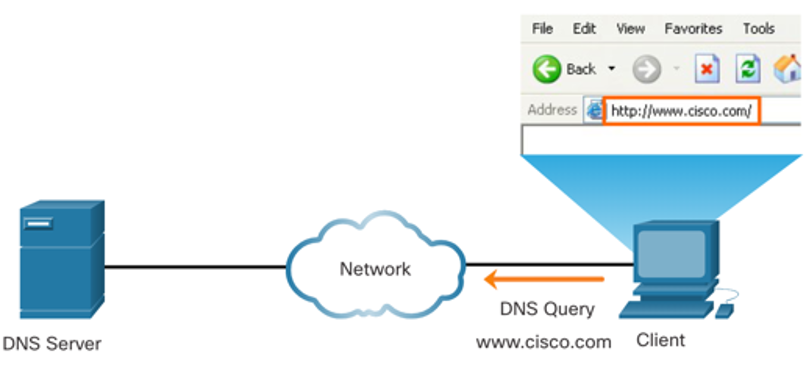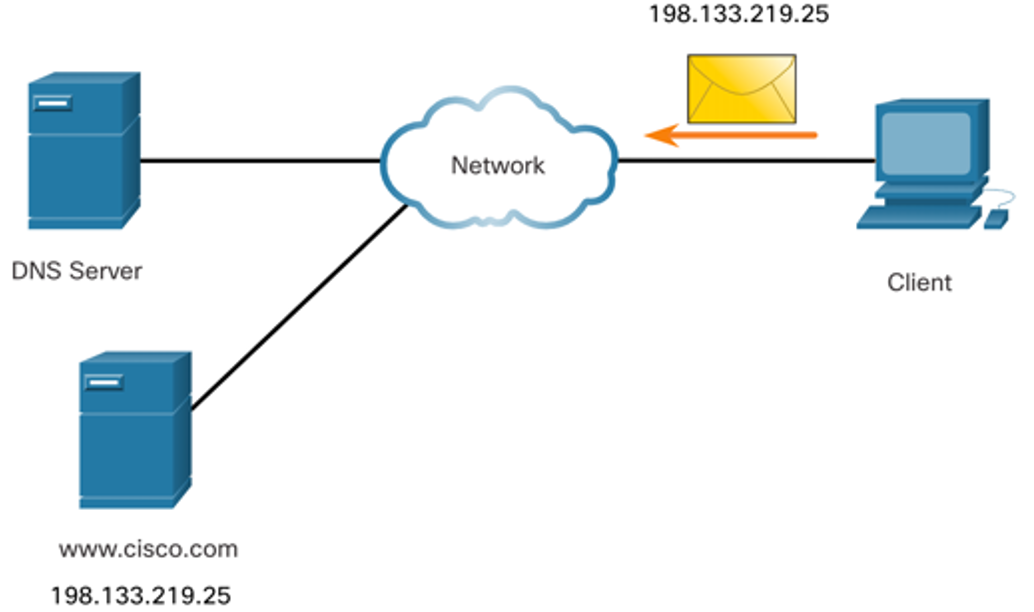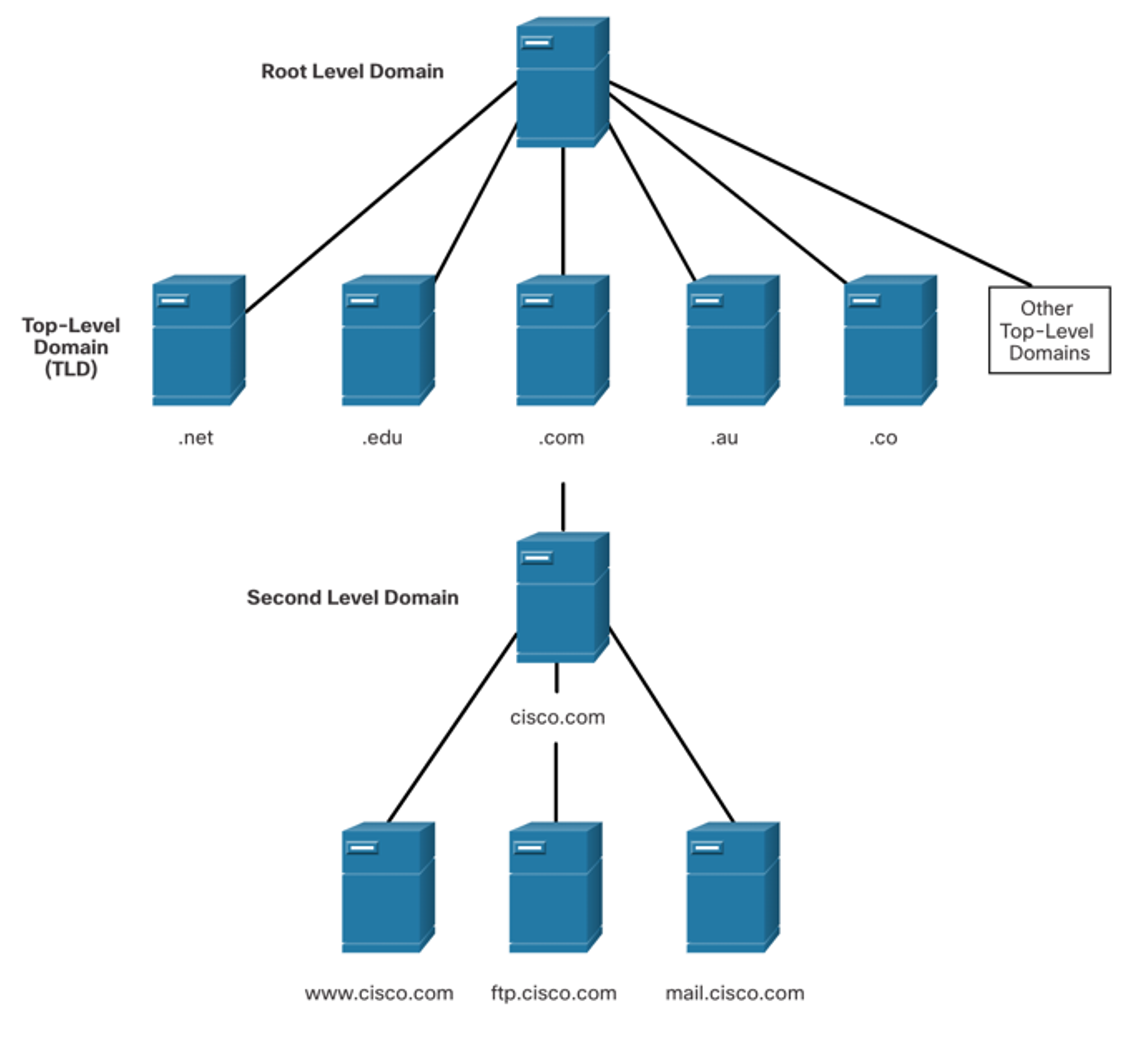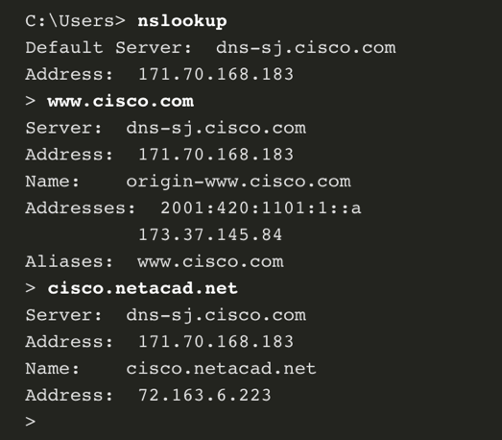
About Lesson
Domain Name Service
Explain how Domain Name Service DNS operate.
- Domain names were created to convert the numeric IP addresses into a simple, recognizable name.

- Fully-qualified domain names (FQDNs), such as http://www.cisco.com, are much easier for people to remember than 198.133.219.25.

- The DNS protocol defines an automated service that matches resource names with the required numeric network address. It includes the format for queries, responses, and data.

Domain Name Service (DNS) Message Format
- The DNS server stores different types of resource records that are used to resolve names.
- These records contain the name, address, and type of record. Some of these record types are as follows:
- A – An end device IPv4 address
- NS – An authoritative name server
- AAAA – An end device IPv6 address (pronounced quad-A)
- MX – A mail exchange record
- When a client makes a query, the server DNS process first looks at its own records to resolve the name.
- If it is unable to resolve the name by using its stored records, it contacts other servers to resolve the name.
- After a match is found and returned to the original requesting server, the server temporarily stores the numbered address in the event that the same name is requested again.
- DNS uses the same message format between servers, consisting of a question, answer, authority, and additional information for all types of client queries and server responses, error messages, and transfer of resource record information.
| DNS Message Section | Description |
|---|---|
| Question | The question for the name server |
| Answer | Resource Records answering the question |
| Authority | Resource Records pointing toward an authority |
| Additional | Resource Records holding additional information |
DNS Hierarchy
- DNS uses a hierarchical system to create a database to provide name resolution.
- Each DNS server maintains a specific database file and is only responsible for managing name-to-IP mappings for that small portion of the entire DNS structure.
- When a DNS server receives a request for a name translation that is not within its DNS zone, the DNS server forwards the request to another DNS server within the proper zone for translation.
- Examples of top-level domains:
-
- .com – a business or industry
- .org – a non-profit organization
- .au – Australia

The nslookup Command
- Nslookup is a computer operating system utility that allows a user to manually query the DNS servers configured on the device to resolve a given host name.
- This utility can also be used to troubleshoot name resolution issues and to verify the current status of the name servers.
- When the nslookup command is issued, the default DNS server configured for your host is displayed.
- The name of a host or domain can be entered at the nslookup prompt.

Other related topics
| Topic Title | Topic Objective |
|---|---|
| Application, Presentation, and Session | Explain how the functions of the application layer, presentation layer, and session layer work together to provide network services to end user applications. |
| Peer-to-Peer | Explain how end user applications operate in a peer-to-peer network. |
| Web and Email Protocols | Explain how web and email protocols operate. |
| IP Addressing Services | Explain how DNS and DHCP operate. |
| File Sharing Services | Explain how file transfer protocols operate. |
Other useful information
Join the conversation